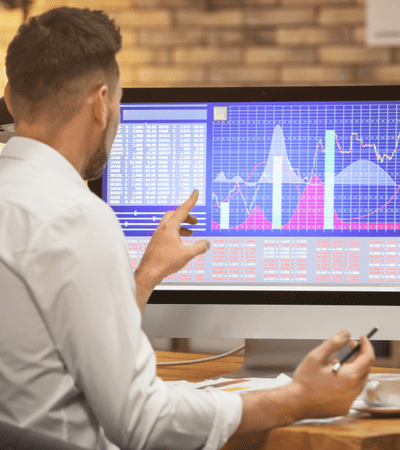Choosing between investment funds
There is no shortage of choice when it comes to investment funds. The Netherlands itself offers around 9,500 investment funds. This makes choosing difficult. How do you choose between all these products? In this article you can read more about how to choose an investment fund .
When choosing between investment funds, many people do not look beyond the return that the fund has achieved in recent years. But that is not enough information to select a fund. Not only because the historical performance of a fund does not guarantee that it will perform well in the future. But there are several things you need to look at to see which fund is suitable for you. For example, you can think of costs, the investment policy and how good the fund is at providing information. The investment strategy is also important. How does the fund choose what to invest in? And what do they actually invest in? Can you choose not to invest in certain things? Are the fund’s reports available to the general public? These are all factors that you should keep in mind when comparing investment funds .
Don’t know yet what an investment fund exactly entails? Then first read the article: ‘ What are investment funds ‘, before you delve into choosing an investment fund.
5 steps to choosing your investment fund
Step 1: What are the goals of a fund?
What is the goal of the fund and how does it want to achieve returns? Does it want to achieve capital gains in the long term? Or does it want to pay out regular bonuses in the form of dividends? It is not about what the best strategy is, but rather which strategy best suits your own goals. For example, if you want to invest for a long period, then a long-term capital gain is good. But if you want to see an immediate income from your investments, receiving regular dividends is a better option.
Before you select a fund, it is therefore important to consider what type of investor you are. Do you want to invest in the short term or the long term? Is sustainability an important topic for you?

Step 2: Look at the fund’s strategy
In addition to the goal, it is also important to look at the fund strategy. You can use the prospectus of a fund for this, in which you can read what a fund invests in and how it decides what to invest in. For funds that focus primarily on shares , you can also read whether they focus more on small, fast-growing companies, or large, but stable companies. Look for a strategy of a fund that you support. Does this strategy also fit in with the goals?
Step 3: What is the risk policy?
In the prospectus of an investment fund you can see what the risk policy of the fund is. Every investment fund is obliged to inform you of the risks of the fund in their prospectus. The risk policy usually does not differ much between different funds, but there are also funds that distinguish themselves. For example, you can think of funds that compare their risk with the risks of the other funds. Bond funds generally also tell you in the prospectus how safe the bonds they trade in are. For example, whether the issuer of the bond is at risk of going bankrupt. Funds often also use risk profiles .
Step 4: What are the costs of the fund?
One of the most important things that determine which fund is most suitable for you is the costs associated with the investment fund ; the costs determine how much return you can earn. That is why it is useful to compare the different funds based on costs, before choosing which one suits you. Think of costs such as the purchase and sale costs and the ongoing costs that a fund makes during the year and whether you have to pay a performance fee.
For example, a performance fee is a fee paid to fund managers when they beat the market. If you choose a fund that has a performance fee, it is good to know how high this performance fee is and against which benchmark a fund compares its performance. Why is it important to know the benchmark? Because the benchmark determines how easy it is for a fund manager to beat the market. If the benchmark is not a good reflection of the market in which the fund trades, it may be too easy for a fund manager to beat the market.
Step 5: What is the fund manager like?
The fund manager determines what an investment fund invests in. That makes it important to know who the fund manager of your investment fund is. In the prospectus of an investment fund you can always find out who is on the board of the fund, but not always who makes the decisions in the fund. If you can’t find it in the prospectus, you can find it in the annual report. (In the prospectus you can find out when the annual report is published.) Once you know who the fund manager is, you can find out which funds he or she has managed before and how these funds have performed. That can give you an idea of how the fund manager will handle the current fund.
Compare brokers and start investing in mutual funds
Are you excited about investment funds after reading this article? Compare brokers with investment funds and find the broker that suits you best!